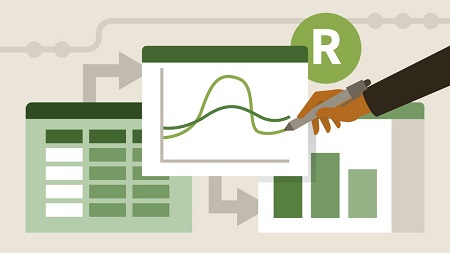
English | MP4 | AVC 1280×720 | AAC 44KHz 2ch | 2h 29m | 1.45 GB
Excel, R, and Power BI are applications universally used in data science and across businesses and organizations around the world. If you’ve spent any time trying to figure out how to better model your data to get useful insights from it that you can act upon, you’ve most likely encountered these applications. In this course, Helen Wall shows how to use Excel, R, and Power BI for logistic regression in order to model data to predict the classification labels like detecting fraud or medical trial successes. Helen walks through several examples of logistic regression. She shows how to use Excel to tangibly calculate the regression model, then use R for more intensive calculations and visualizations. She then illustrates how to use Power BI to integrate the capabilities of Excel calculations and R in a scalable, sharable model.
Table of Contents
Introduction
1 Apply logistic regressions to solve problems
2 What you should know
3 Introduction to the course project
4 Configuring the Excel Solver Add-in
5 Working with R
6 Configuring R in Power BI
Distributions and Probabilities
7 Introducing AI and logistic regression
8 Differentiating between odds and probabilities
9 Differentiating between distributions
10 Calculating logs and exponents
11 Sigmoid curve
12 Utilizing training and testing data sets
Binomial Logistic Regression
13 Calculating linear regression
14 Working with the logit model
15 Calculating log likelihood
16 Constructing MLE
17 Solving MLE
18 Predicting outcomes
19 Visualizing logistic regression
20 Challenge Calculating logistic regression
21 Solution Calculating logistic regression
Fine-Tuning the Model
22 Adding more independent variables
23 Transforming variables
24 Calculating correlations
25 Using statistics
26 Configuring confusion tables
27 Challenge Fine-tuning the model
28 Solution Fine-tuning the model
Multinomial Regression
29 Calculating odds for multinomial models
30 Calculating probabilities for multinomial models
31 Calculating multinomial log likelihoods
32 Running MLE
33 Making the predictions
Working in Power BI with R
34 Running R scripts in the Power Query Editor
35 Running R standard visuals
36 Interacting between visual components
37 Challenge Moving into Power BI
38 Solution Moving into Power BI
Conclusion
39 Next steps with logistic regressions
Resolve the captcha to access the links!